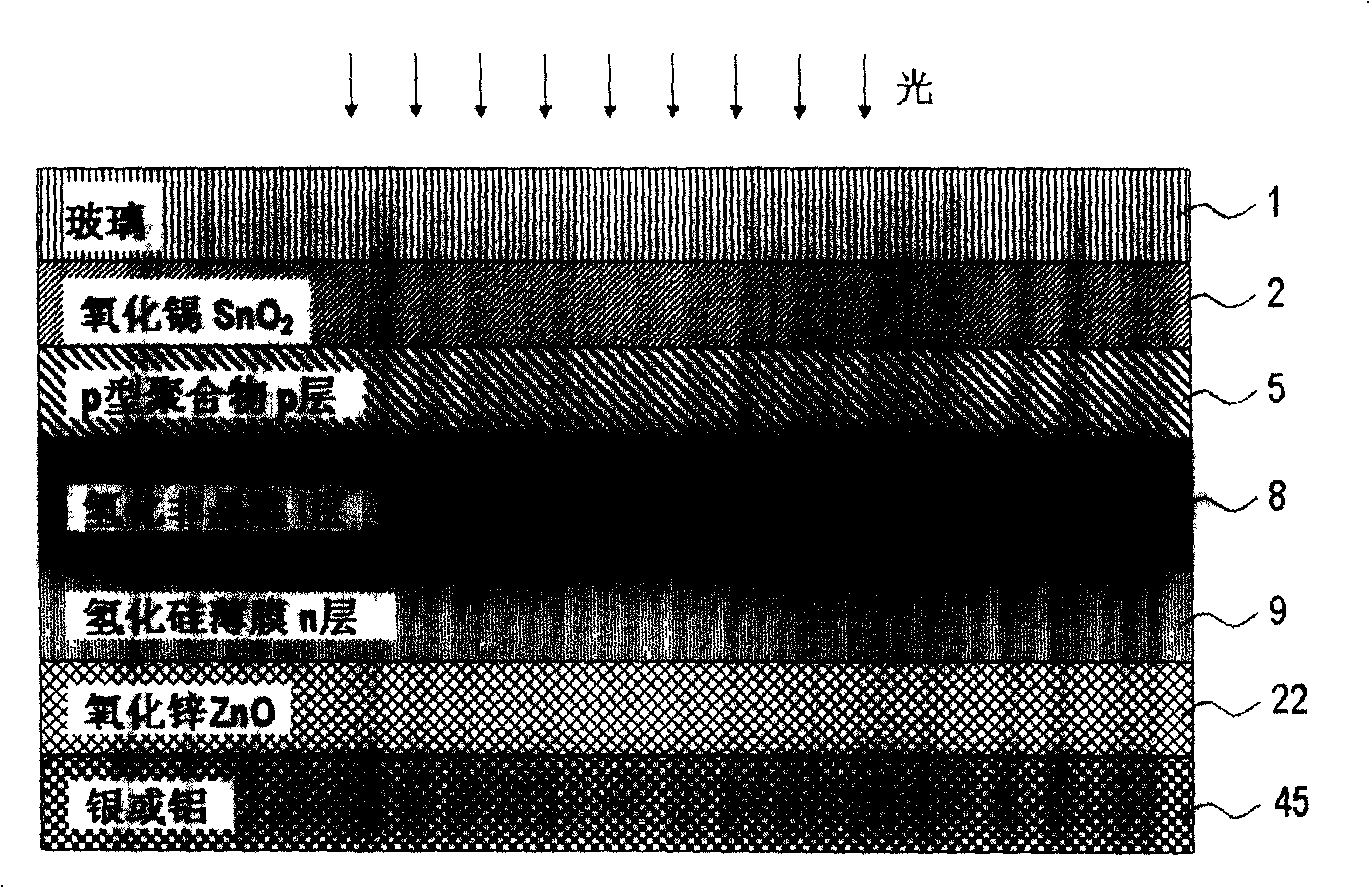Transparent conductive polymer as amorphous silicon battery p layer
A technology for hydrogenating amorphous silicon and transparent metals, applied in the field of solar energy materials, can solve the problems of reducing photocurrent collection efficiency, increasing p-layer resistance, and increasing resistivity
- Summary
- Abstract
- Description
- Claims
- Application Information
AI Technical Summary
Problems solved by technology
Method used
Image
Examples
Embodiment Construction
[0017] A representative method for forming conductive polymers is to use vacuum coating to produce p-type conductive polymers with a thickness in the range of 10-30 nanometers at a temperature not exceeding 300 ° C, including nitrogen-sulfur long Polymers composed of chain polymers and hydrocarbons.
[0018] The above-mentioned p-type conductive polymer can be used as the p-layer of p-i-n-type amorphous silicon solar cells to reduce light absorption loss, thereby increasing its output power. As shown in the accompanying drawings, the structure of this type of cell includes a first layer or substrate 1 with high transparency and structural stability, a transparent conductive oxide front electrode 2 (front contact layer) formed on the substrate, a A p-layer 5 made of conductive polymer, an i-layer 8 made of non-doped hydrogenated amorphous silicon, a phosphorus-doped n-layer 9 based on hydrogenated silicon thin film, another transparent conductive film 22, a metal film 45. In ...
PUM
| Property | Measurement | Unit |
|---|---|---|
| Thickness | aaaaa | aaaaa |
| Thickness | aaaaa | aaaaa |
| Thickness | aaaaa | aaaaa |
Abstract
Description
Claims
Application Information
 Login to View More
Login to View More - Generate Ideas
- Intellectual Property
- Life Sciences
- Materials
- Tech Scout
- Unparalleled Data Quality
- Higher Quality Content
- 60% Fewer Hallucinations
Browse by: Latest US Patents, China's latest patents, Technical Efficacy Thesaurus, Application Domain, Technology Topic, Popular Technical Reports.
© 2025 PatSnap. All rights reserved.Legal|Privacy policy|Modern Slavery Act Transparency Statement|Sitemap|About US| Contact US: help@patsnap.com

